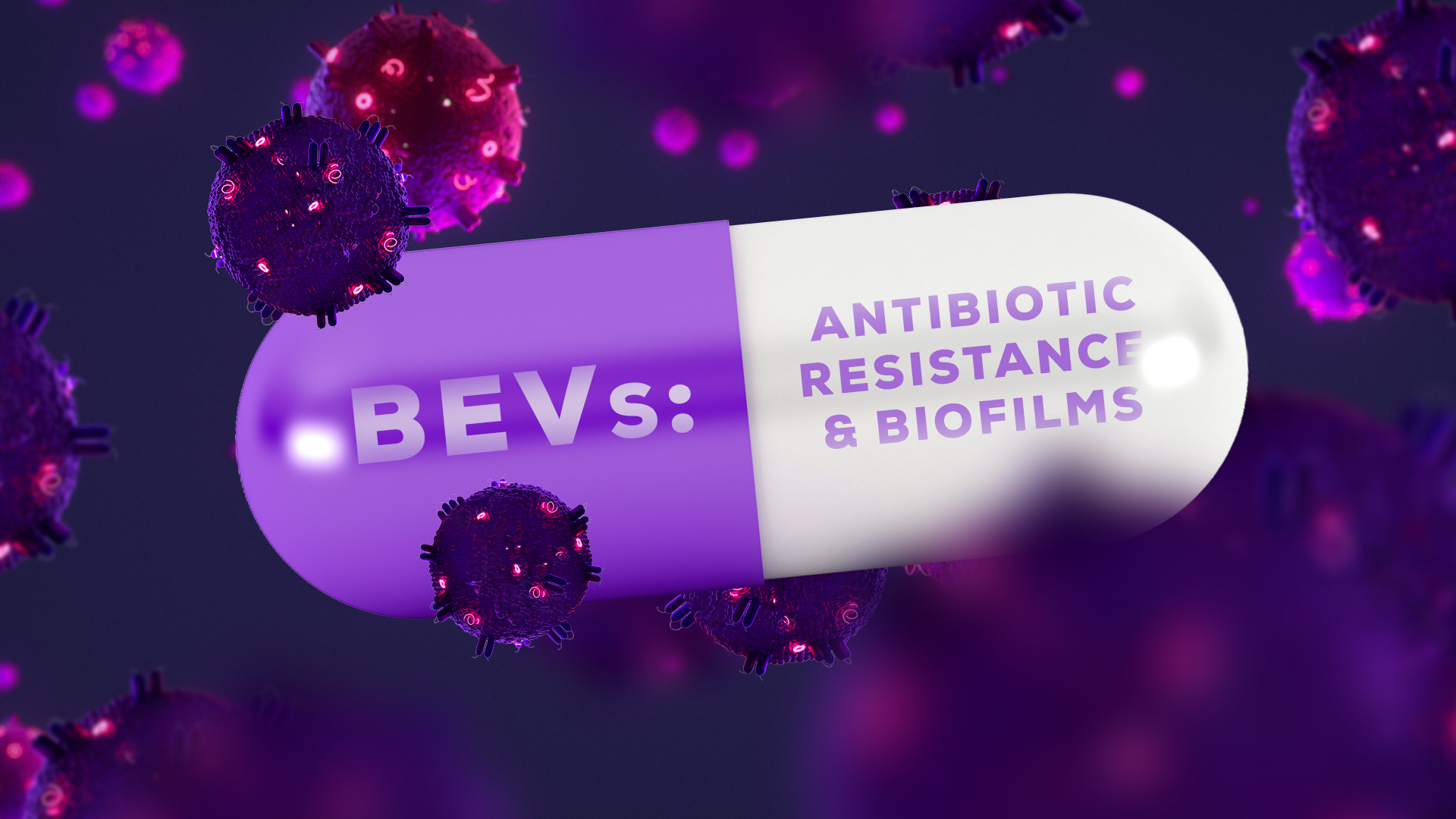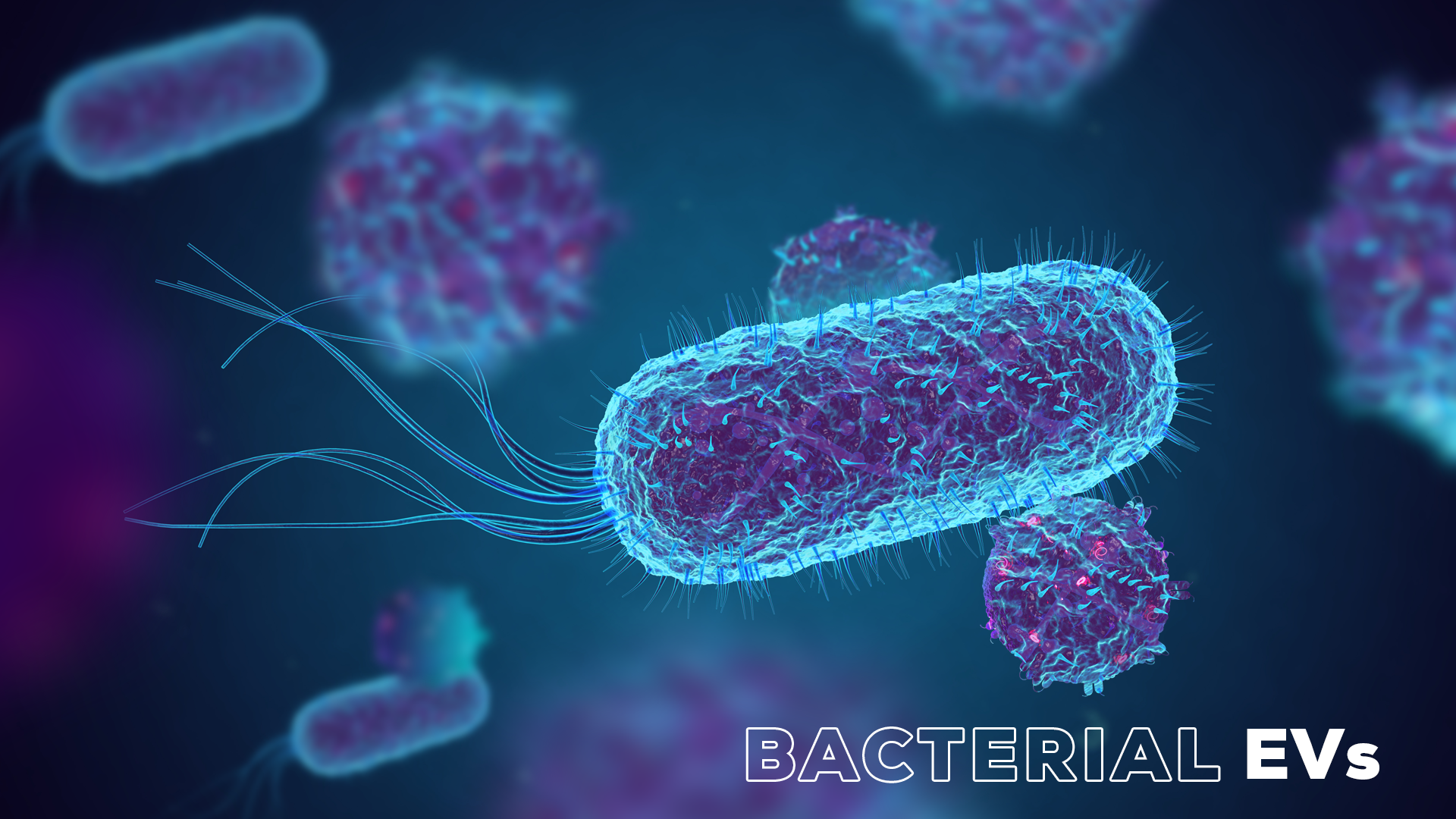Latest articles

Turning the Tide: Therapeutic Uses of Bacterial Extracellular Vesicles
Bacterial EVs are often associated with antimicrobial resistance, yet these very mechanisms may also make them powerful tools for therapeutic development.


A Budding Problem: BEVs in Antibiotic Resistance
Explore the integral role of bacterial extracellular vesicles in the rise of resistance and resilient biofilms.


Getting to Know Bacterial Extracellular Vesicles: Heroes or Villains?
Explore the dual roles of bacterial extracellular vesicles (BEVs) - from mediating pathogenesis to offering novel therapeutic opportunities.


Publication Watch: 2025 So Far
It’s well over halfway through 2025 already! Here’s a roundup of some of the papers you’ve published so far this year.


Beyond Biomedical: Exploring Veterinary Applications of Extracellular Vesicle Research
Extracellular vesicles (EVs) are making their mark in human medicine - now, they’re showing promise in veterinary care too.


Measuring Nanoplastics with TRPS: A Precise Approach to a Growing Concern
Nanoplastics are tiny plastic particles invisible to the naked eye — but their impact on ecosystems and human health may be anything but small. As research into micro- and nanoplastic contamination increases, tunable resistive pulse sensing (TRPS) is emerging as a powerful method to characterise these elusive pollutants.


Biobanks in Focus: Enabling Translational EV Research
Biobanks offer a rich resource for EV research - but are the samples suitable? Explore the practicalities of using biobanked plasma for EV isolation, with a focus on real-world compatibility, sample volume, and storage impact.


Smarter Separation: How SEC+ Enhances EV Isolation
Become familiar with SEC+ and the distinct advantages our Gen 2 resin offers over traditional SEC resins, including our discontinued Sepharose-based Legacy columns.


qEV Publication Watch 2024
A selection of publications from 2024, demonstrating a range of applications and high-quality performance for Izon’s qEV isolation technology.


Bridging the Diagnostic Gap: EVs in Early Ovarian Cancer Detection
Early diagnosis of ovarian cancer remains a challenge, but what if the answer lies in the smallest of clues?


qEV Isolation: A Scalable Solution for LNP Purification
Don't let the name mislead you, EVs are not the only nanoparticle qEV columns can purify from a sample. Liposomes and lipid nanoparticles (LNP) can be isolated, too.


Meet Extracellular Vesicle-Associated AAVs: Gene Therapy's Nanoparticle Power Couple
EV-AAVs (sometimes known as exo-AAVs) offer enhanced gene therapy potential over solo-AAVs, thanks to improved transduction and targeted delivery. Obtaining highly purified EV-AAVs is crucial, with size-exclusion chromatography (SEC) proving to be a scalable and effective method for isolation.


Pairing Tangential Flow Filtration with qEV Columns: A Scalable Solution for EV Isolation
Unlock the potential of extracellular vesicles for therapeutics with a scalable isolation method that combines tangential flow filtration and qEV columns for optimal efficiency.


The Critical Role of Zeta Potential Measurements in Advancing Medicine
What is zeta potential, and how are zeta potential measurements shaping nanomedicine developments?


New qEV Isolation Developments to Accelerate EV Research and Clinical Development: ISEV2024 Highlights
Catch up on the latest developments in qEV isolation designed to boost scalability in EV isolation across the diverse EV field.


The Protein Paradigm: From Contaminants to the Extracellular Vesicle Corona
Albumin is a contaminant of extracellular vesicle isolates, right? New research suggests that it may actually be part of the extracellular vesicle corona.


qEV Publication Watch: Q1 2024
Check out some of the latest research employing qEV columns! A roundup of 10 articles making waves in the EV space.


The Journey of the Coulter Counter: From Blood Cells to Nanoparticles
Let's take a look at the 80-year history of the Coulter counter – the founding principle of TRPS.


Purifying EVs? Here's Why the AFC is the Best Candidate for the Job
Looking for an effective and reliable way to isolate EVs? Consider the AFC – coupled with qEV columns. A combo that is sure to up your EV isolation game.


qEV and MISEV2023: What You Need to Know
Everything you need to know about MISEV2023 and how to meet it when publishing your qEV research.


Understanding More With qEV10 Columns: Clinical Applications and Cell Death Regulation
Findings from five recent studies utilising the qEV10 column's benefits for important medical research.


More Than EVs: How the Exoid Can Benefit Your Core Research Facility
Looking for a versatile tool to add to your research facility’s repertoire? The Exoid has you covered.


From Plasma to Pathology: A Robust EV Isolation and Quantification Workflow
Diehl et al., (2023) describe a standardised EV workflow using qEV isolation and TRPS to streamline EV isolation and characterisation protocols.


TRPS-Driven Discoveries: From Bone Regeneration to Cardiac Disease Biomarkers
A wrap-up of publications featuring Tunable Resistive Pulse Sensing technology in Q4 of 2023.


qEV Publication Watch: Q4 2023
A snapshot of publications built on qEV isolation technology, from the final quarter of 2023.


Beyond Ultracentrifugation: Embracing the qEV100 for Enhanced Large-Scale EV Isolation Purity and Efficiency
The qEV100 is used to isolate extracellular vesicles (EVs) from large sample volumes. How does this size exclusion chromatography column stack up against ultracentrifugation?


Introducing the qEV 20 nm Series: A New Frontier of Isolation
Introducing the new qEV 20 nm Series, allowing you branch even further into the small end of the size spectrum and isolate more small particles than ever before.


Exoid Update: Measuring More Small Particles More Accurately
A new Exoid update is here and it is making the measurement of small particles easier and more accurate than ever before.


International Standard Developed for TRPS Measurement of Particle Size Distribution
The International Organization for Standardization has created an ISO standard for Tunable Resistive Pulse Sensing measurement of particle size distribution.



